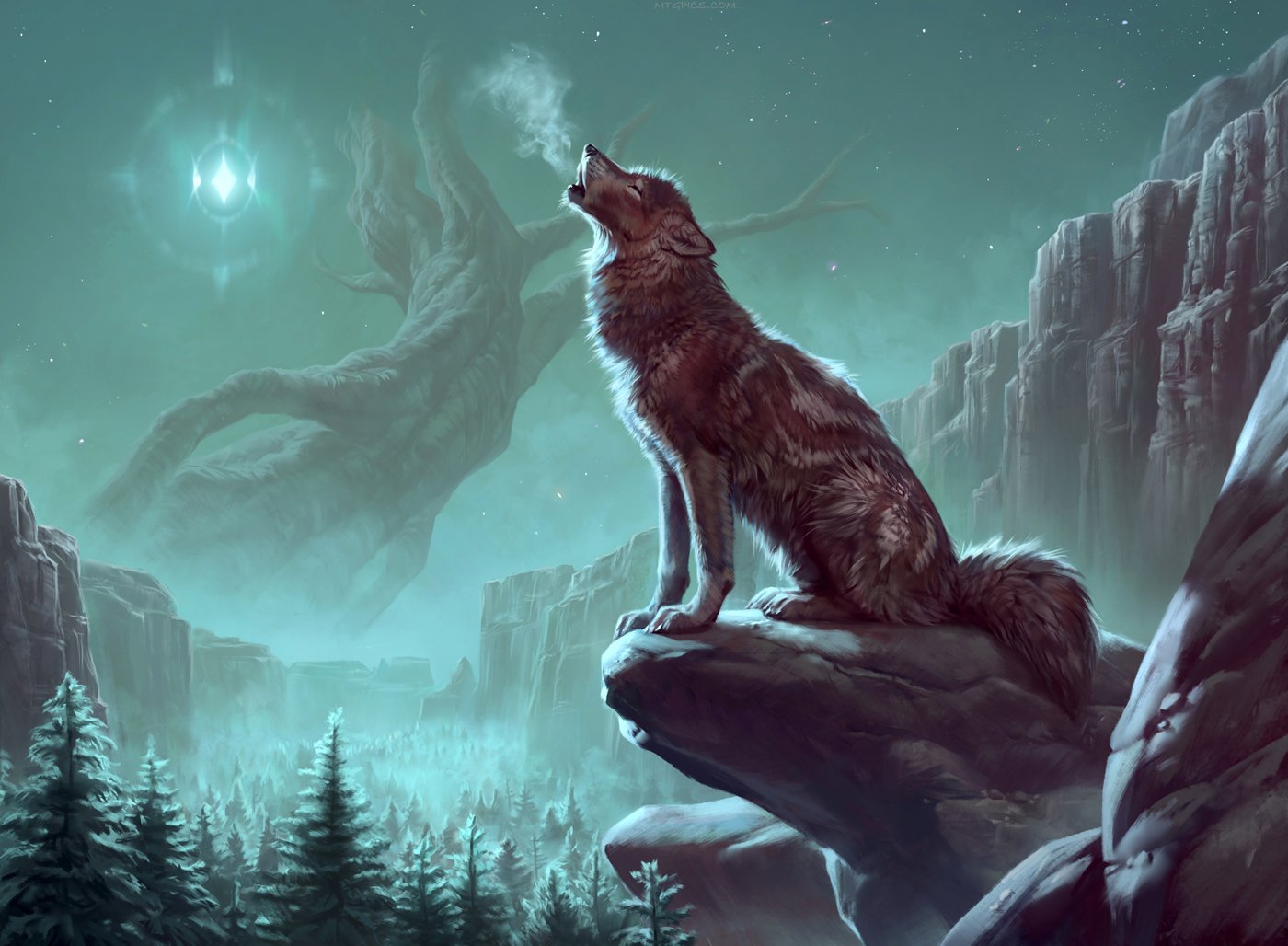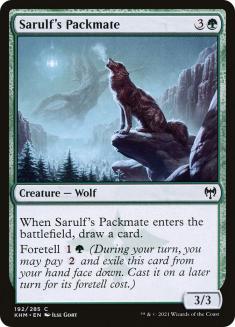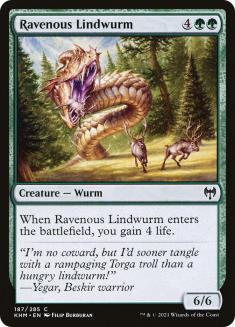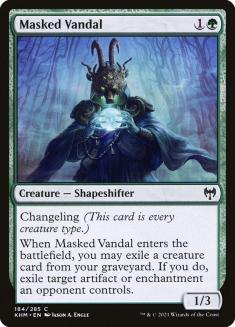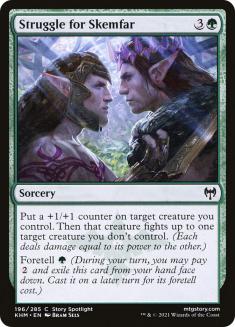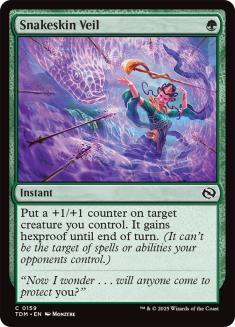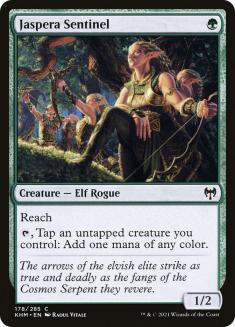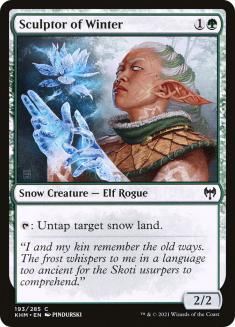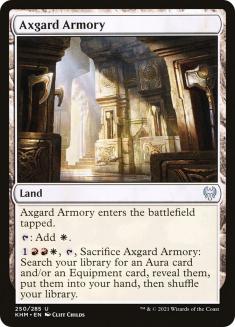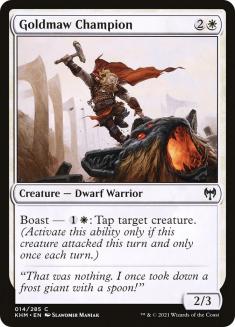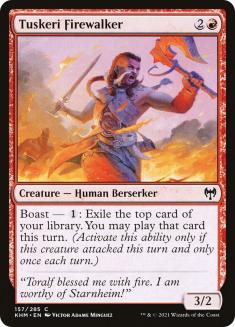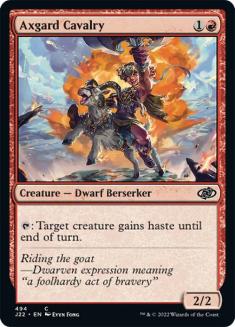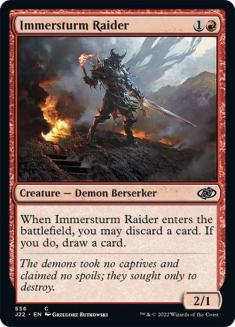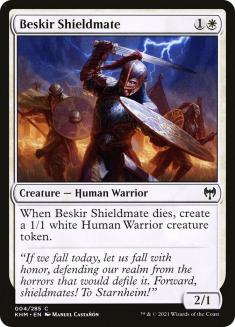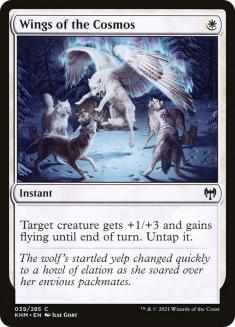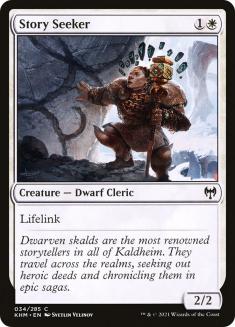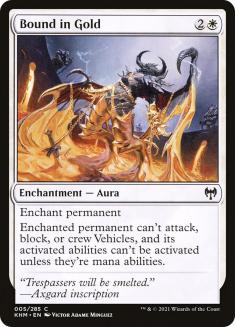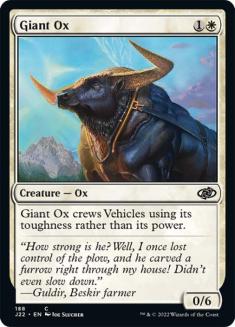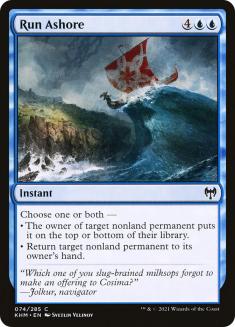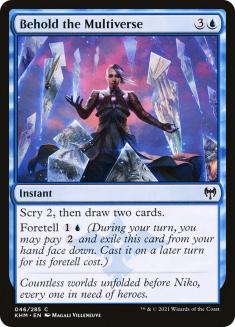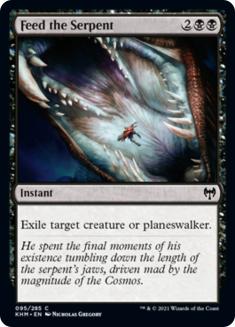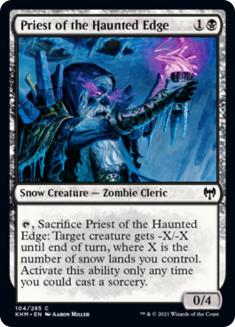17Lands.com has revolutionized Limited strategy discussions. While I’ve been critical of tier lists that some content producers create about Limited, as I think they lead to players underestimating the significance of context in evaluating cards, I have to admit that they offer a useful baseline for players who struggle with general card evaluation.
The issue is that, as I see it, players always discover their own local maxima; that is, they find a thing that works for them, but they have no way of knowing whether there’s a different thing that’s better that they don’t do. It’s impossible to know all the biases that can be built into a particular tier list when a single person generates it. When we have large quantities of data, it’s a different story.
For anyone who isn’t familiar, 17Lands offers a tracker that you can use while drafting on Arena that logs your drafts, your decks, and your win rates, and you can view all that stuff on their website. It also “watches” all of your games, tracks data about when every card is drawn and the outcome of the game, and compiles that data into publicly viewable tables, along with data about when the card is drafted. You can also have it graph different win rates against each other.
Now, when someone asks the top five green commons in Kaldheim, I can say, “Well, if you want to know the commons that are most likely to be played in winning decks, those are Sarulf’s Packmate, Ravenous Lindwurm, Masked Vandal, Struggle for Skemfar, and Snakeskin Veil, in that order,” but those win rates might not have a lot to do with how good the cards are in general.
For example, it’s possible that people are more likely to play Snakeskin Veil if they have a bomb creature they want to protect, which could inflate its stats, or maybe people are unlikely to play it in a kind of green deck that wins less often, so instead, we can look at how often a player wins when they draw each card in their opening hand. If you look at that, the top five green commons are Sarulf’s Packmate, Jaspera Sentinel, Sculptor of Winter, Ravenous Lindwurm, and Snakeskin Veil. Not surprisingly, cheap creatures that are good to play early in the game do better by this metric, but it stands out that despite costing six mana, Ravenous Lindwurm scores pretty well in opening hands because it’s just that good.
Alternatively, we could look at how often we win a game in which we draw the card in question. This way we know the card at least had the potential to impact the outcome of the game directly, in which case we find the that top five green commons are Sarulf’s Packmate, Ravenous Lindwurm, Jaspera Sentinel, Masked Vandal, and Sculptor of Winter.
We could also look at how cards perform when they’re drawn during a game, but not in the opening hand, but I think that number is only useful for providing context for other numbers. Similarly, we can look at win rate for a card when it is not drawn, but again, I think that number’s only really useful for contextualizing other data.
So what’s the real list? If I’m touting this as the perfect replacement for tier lists, which list exactly am I suggesting people should look at? Well, unfortunately, there’s not necessarily an obvious answer. The data, when viewed in this way, forces us to address the concept of “good card in a bad deck” much more directly than we typically do.
In the past, people have often said things like, “Well, this is a strong card, but I think black’s pretty bad, so I wouldn’t take it.” Now, I can look at a list that says that the black rare with the highest win percentage when maindecked, Skemfar Avenger at 54.1%, happens to have, I believe, the exact same win percentage as the sitewide average (because players who use the tracker collectively win more than half their games, which is possible because not all players use it). This is to say that black is so weak that no matter how strong an individual card is, you’re still starting down a path to a deck that struggles to win as much as other decks.
I have a theory that you’d be reasonably well served by always taking the card with the highest win percentage when played as your first pick in a draft, as that number takes into account not only the strength of a card itself but also precisely how strong your color preference for or against it should be.
However, this list isn’t perfect. How do I know it’s not perfect? Well, looking at the stats on the list, one card makes it very clear.
Axgard Armory has the eleventh-highest win rate when played of any card in the set. So how do I know that’s misleading? Maybe it’s just much stronger than I think.
Well, it wins more when not drawn than any card higher than it on the list by over 1%, but more importantly, it wins more often when you don’t draw it than when you do draw it. This means drawing it actively hurts your chances of winning, according to these numbers, which would suggest that its high win rate is probably because it’s played primarily in Boros decks.
But beyond that, it’s probably more likely to be played specifically in Boros decks with good Equipment (or Auras, but the best Equipment is more significant) to find. So I have reason to know that this card itself isn’t as strong as the win rate suggests; it just happens to make it into good decks.
Furthermore, we can look at when cards are generally taken. Most of the cards with the highest win rates when played are good rares that are typically taken first through third pick, but Axgard Amory tables. This means, first of all, I could probably take it later if I want it, and second, I have to remember that other cards are winning despite someone spending an early pick on them, while Axgard Armory is going late, so the player who had it has an extra early pick that they didn’t spend on it. Overall, I don’t think that’s too significant, but if a card is overperforming, it is an advantage to the deck it ends up in if it’s typically taken with a late pick, as it’s likely to have better company.
Unfortunately, the only real conclusion here is that Magic is complicated — no single statistic tells you everything. Battlefield Raptor is the common with the highest win percentage when played, but Sarulf’s Packmate wins more than Battlefield Raptor when you draw it no matter when you draw it.
I would not recommend taking Battlefield Raptor over Sarulf’s Packmate, but I also can’t argue that it’s crazy if you aren’t in green, as it might be worth establishing yourself in white; of the ten commons with the highest win rates, five are white, four are red, and one is Sarulf’s Packmate. The next ten are also Boros cards and Ravenous Lindwurm.
This data tells an extremely clear story about Boros being the best deck, and as it happens, we have stats for that too. Oddly enough, among two-color pairs, Boros wins 57.8%, which is behind Selesnya’s 58.3%, but ahead of every other two-color pair. However, the data classifies “mono-color + splash,” which is defined as playing only one to three cards of the second color, differently, and mono-white + splash wins 58% of the time, while mono-red + splash wins 58.2% of the time.
Regardless of how we rank green compared to red and white, every deck without blue or black performs better than every deck with blue or black (from among one or two color decks). Berg Strider, the blue common with the highest win percentage, wins below the sitewide average.
But again, all of this is analyzing from the perspective of how often a deck that contains a card wins, completely agnostic of whether that card is drawn. We can get a more accurate picture of the power level of a card based on how much we win when we actually see it.
There are three different categories that look at this. The most obvious is labeled “GIH WR,” which is the win rate among games when this card is ever drawn — “games in hand,” though I believe it actually looks at drawing the card, not the card entering your hand (like Runes entering your hand when Runeforge Champion searches).
The issue with this method is that you’re more likely to see a card in a long game, so this slightly emphasizes cards that are good in long games, particularly expensive cards. To account for that, we can also look at a card’s win rate when it’s drawn in your opening hand. This gives all cards an equal chance to show up and doesn’t care how long the game is, but it also biases toward cards that are best in the first few turns.
The last option is the win rate exclusively when the card is drawn after opening hands are drawn. I don’t believe this number is useful by itself, but it provides context for how big the gap is between opening hand and later in the game.
We can look at a graph that compares “opening hand” win rates to “drawn in-game” win rates, and, as we’d expect, the outliers that win more in the opening hand generally cost one or two mana, and the cards that win more when drawn later either cost five to six mana or rely on a full battlefield or graveyard. Cards that perform close to the same either way are cards that cost three or four mana or cards that probably don’t impact the outcome of a game much, and mostly reflect the win rates of their archetypes like nonbasic lands (in the case of the uncommon lands, it also just doesn’t matter very much when you draw them, even when they do matter).
GIH WR is always somewhere between the other two, and I think it’s the best of those metrics, but if you’re drafting an aggro deck, you might want to shift your perspective to more heavily prioritize opening hand win rates. Interestingly, when we look at the top ten commons by this metric, four are green while only two are white. Three are red, and the last card, which always seems to surprise people, is Run Ashore. It also seems noteworthy that the three red cards are the three removal spells — Squash, Demon Bolt, and Frost Bite — while the top green and white cards are all creatures, not Bound in Gold or Struggle for Skemfar (more on this later).
I mentioned that the win rate when a card isn’t drawn is also available and useful for providing context. Given that we know that white and red aggressive cards dominate the win rate when played but don’t show up as much on the when-drawn list, it should stand to reason that they would be the top of the win rates when not drawn, and the top of the win rates when-not-drawn list is a who’s who of Boros Aggro filler cards — the top five are Goldmaw Champion, Tuskeri Firewalker, Axgard Cavalry, Immersturm Raider, and Beskir Shieldmate.
All of those get played in Boros Aggro, but for all of those cards, the deck wins more when the pilot doesn’t actually draw them. In sixth place on the list, Battlefield Raptor is the card with the highest win rate when not drawn that you actually want to draw, and it boasts the second-highest opening hand win rate among commons in the set, behind Sarulf’s Packmate.
This stat tells us that when these cards show up with high win rates, there’s a good chance that they’re being carried by good company and they might not be pulling their weight.
If we isolate cards by color, we can remove a good amount of the cloudiness that comes from factoring the strengths of different decks/colors into the stats, and we can get a bit more clarity on what these numbers are telling us about cards.
White
Looking at white commons, we can see that the top five by win rate when drawn at any point in the game are Battlefield Raptor, Story Seeker, Stalwart Valkyrie, Bound in Gold, and Wings of the Cosmos. Are these the five strongest white commons? If they are, it would probably surprise some people, as Wings of the Cosmos is the white common drafted third from last, while Story Seeker, the card with the second-highest win rate, is drafted seventh most highly.
The “games played” win percentage lines up very closely with the “games drawn” win percentage. If we look at opening hand win percentage, the top two are still Battlefield Raptor and Story Seeker, but other cheap cards move up and expensive spells move down. All I can conclude from this is that it makes sense that the overall win rates track closely with the opening-hand win rates since white decks tend to be aggressive.
If we look at the win rates when a card is drawn outside of the opening hand, it tracks a little more closely with how cards are drafted, with Stalwart Valkyrie and Bound in Gold on the top of the list, but then Wings of the Cosmos is the third-highest-performing card. I can’t find any reason from these stats not to conclude that Wings of the Cosmos is a somewhat underrated trick, as its win rate when drawn is actually (extremely slightly) higher than its win rate when not drawn.
So is Bound in Gold just exceptionally overrated? Honestly, I think it is. I considered the idea that maybe the thing holding it back is that people splash it in decks that have a lower win rate, but you can actually isolate for performance in a single archetype, and within every white archetype, Bound in Gold doesn’t have particularly impressive stats.
Conventional wisdom rates removal very highly. People don’t like losing to bombs, and when you lose to a bomb, it’s easy to think you’d have won the game if you had a removal spell.
Personally, I think the gap between instant- and sorcery-speed removal is massively underestimated. I like instant-speed removal because it allows me to generate card advantage by blocking a small creature and killing it in response to a trick, or attacking with a large creature and killing a creature that’s part of a group block.
Sorcery-speed removal only generates card advantage when it answers a creature with an Aura, and even then, the creature has probably already gotten in some extra damage thanks to the Aura. Bound in Gold is a fine card, but it’s hard to generate a huge advantage from casting it.
The last amusing data point in white is that Giant Ox boasts the biggest jump in win percentage when drawn, which is a strange stat, but I believe the best explanation is that it’s rarely played unless it’s played with Colossal Plow, and those decks are going to do much worse when they don’t draw Giant Ox. When you play it, your deck kinda needs to draw it.
Blue
If we look at blue commons, we find even more surprising results to parse. Run Ashore tops the “win rate when drawn at any time” list while being drafted thirteenth-highest, behind many awful cards.
Its stats are frankly outstanding. It has the highest improvement when drawn of any blue common, meaning that you win much more when you draw it than when you don’t, so it’s not being carried by seeing play in good decks, and it’s not even particularly being carried by being an expensive spell, as it has the third-highest opening-hand win rate of any blue common.
Run Ashore notably outperforms Behold the Multiverse in every category except a small loss in games-not-drawn win rate, which I think is mostly noise, but also possibly a point in favor of Run Ashore, as sometimes that stat rounds to “But what if you don’t draw your good card?”
Any reasonable stat you could look at suggests that the top three blue commons are Run Ashore, Berg Strider, and Mistwalker in some order, but Behold the Multiverse is still the most highly drafted blue common. Almost everyone who makes content about Limited, myself included, listed Behold the Multiverse as one of the top cards in the format when the set was released. Since then, I’ve found that the format is fast enough to heavily punish spending the time to cast Behold the Multiverse, but I’m not sure if word has really gotten out. So is Run Ashore really a better card than Behold the Multiverse?
Everything I said about why instant-speed removal is good applies to Run Ashore, and it’s trivially easy to generate card advantage with if that’s what you’re looking for by either bouncing something you control that draws a card while putting your opponent’s card back in their library, or saving one of your cards from removal, but you can also use it as a massive tempo swing, either buying time by removing two attackers or ending a game by removing two blockers (and you don’t even suffer any card disadvantage when you do this).
This is a prime example of the stats here teaching me an unconventional lesson that largely tracks with my experience when I stop and think about it. Would I independently have had the confidence to disagree with everyone about the strength of Behold the Multiverse? No, but so much of the data on 17Lands tracks with what I’d expect that when something doesn’t track, I’m willing to trust the data over people’s intuitions. And when I think about how I’ve seen the cards play, the results generally support the data.
When I first saw the win rates for Behold the Multiverse, I thought maybe the issue was that the card gives you a lot of options, and maybe people don’t play it well, or maybe they’re playing it in the wrong decks. Well, it’s not actually that hard to figure out whether you want lands or spells. And as for playing it in the wrong decks, I mean, kind of, but the real issue here is that it just doesn’t belong in good decks, or at least, it’s not important to them.
Black
Black tells some interesting stories. First of all, every common wins below the sitewide average (the same is also true of blue, as I mentioned earlier), but the black cards with the highest game-played win percentage are Koma’s Faithful and Deathknell Berserker, followed by Feed the Serpent, Elderfang Disciple, and Raise the Draugr. I believe the reason for this is that Golgari is the black deck that wins the most, so the cards that are most likely to be played in Elves are the commons that are most likely to be in winning decks.
Feed the Serpent has the highest win rate when drawn, though it wins less than five respectable cheap black creatures when drawn in the opening hand, which I take to mean that it’s good, but not that good, which tracks with my experience —it’s a versatile instant-speed removal spell, but the format is so aggressive that it usually has to trade down on mana (especially if you draw it early).
Priest of the Haunted Edge is noteworthy as the card that offers the highest improvement when drawn compared to when you don’t draw it, but that’s mostly on the back of having an awful win percentage when not drawn, which I assume speaks somewhat to the cost of drafting the snow lands to enable it. It does have the second-highest win rate when drawn, but I think the fact that decks that contain it win so much less than decks with any of the Elves suggests that it’s better not to bother unless you’re already looking for snow.
Red
Looking at red, the top three removal spells are the top three commons, though Tormenter’s Helm and Fearless Pup jump to the top of the list if we only look at opening hands. Tuskeri Firewalker continues to be notable for being much better not to draw, but I don’t really think that’s much of an indictment of the card; it’s fine at what it does, but you’d rather draw premium one and two-mana creatures in the decks it goes in.
Green
In green, games-in-hand win rate suggests a top five of Sarulf’s Packmate, Ravenous Lindwurm, Jaspera Sentinel, Masked Vandal, and Sculptor of Winter in that order. Based on when these cards are taken on average, I can see that most players don’t agree with this ranking, but I honestly think it’s basically perfect. I’m 130 drafts into the set, and this just lines up exactly with how I’ve come to value the green commons.
If you look by games-played win percentage, you’ll find Struggle for Skemfar and Snakeskin Veil pass Sculptor of Winter and Jaspera Sentinel, but both of those cards have much lower improvement when drawn and they’re all within .3% of each other in games-played win percentage anyway. Really, all of these cards are extremely close in power level except Sarulf’s Packmate and Ravenous Lindwurm are way ahead of the others, with Packmate substantially ahead of Lindwurm.
The strength of Ravenous Lindwurm is kind of old news by now, since it has such impressive stats that it really stands out, but I think this 17Lands data really broke the news on this card.
One thing that’s been interesting to note, as I’ve checked the stats periodically here, is that the win rates have changed very little from when the set first came out. 17Lands offers charts about when cards were drafted over time in a tab it calls the “card evaluation metagame” where we can see how players have adjusted their pick order, but mostly I see picks slowly adjusting to get closer to the data we’ve had all along, but continuing to lag way behind.
My conclusion from studying the data, listening to what people say about the format, and playing is that you should trust the data, and when you’re looking for information on how to rank cards individually, look at 17Lands.com over your favorite drafter’s tier list. When particular numbers look weird, there’s sometimes an explanation that isn’t in the numbers, like why it’s so important to draw Giant Ox once you’ve put it in your deck, but in aggregate, any discussion about ranking cards these days needs to start from the data here and explain why it does or doesn’t match people’s experience or expectations.
As long as we have access to this data, it should be the basis for all discussion of individual card evaluation in Limited.

